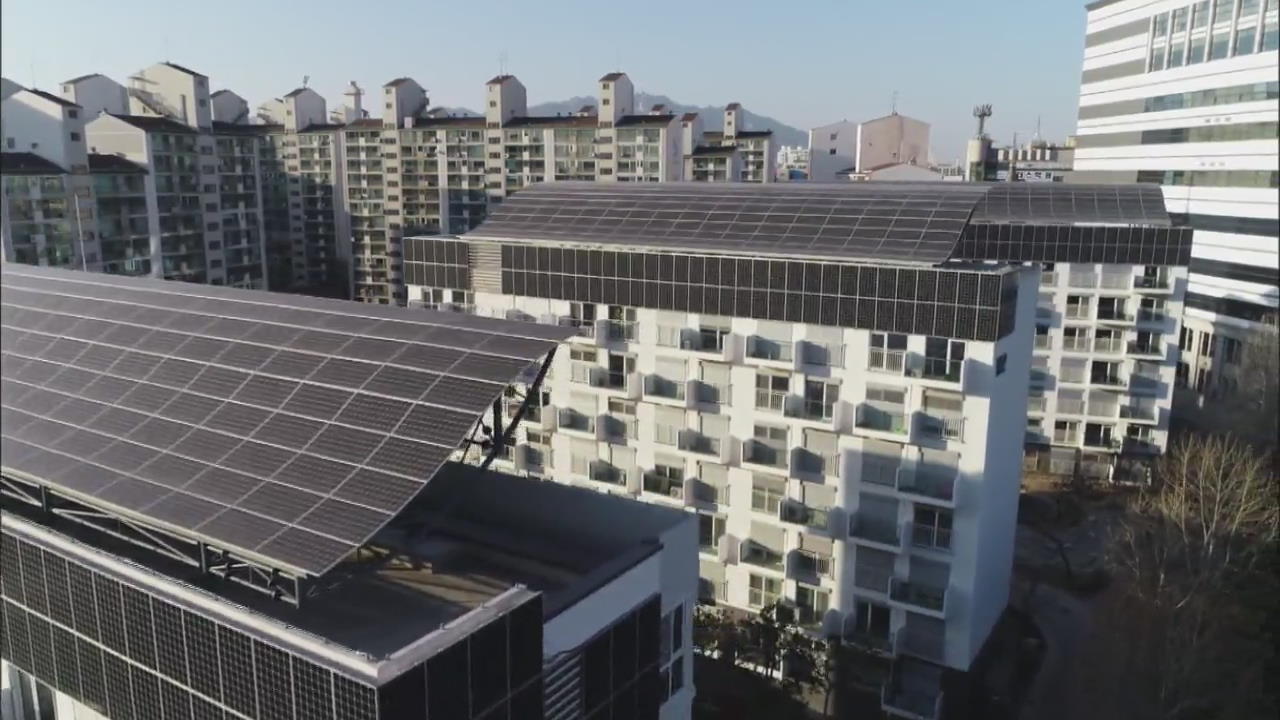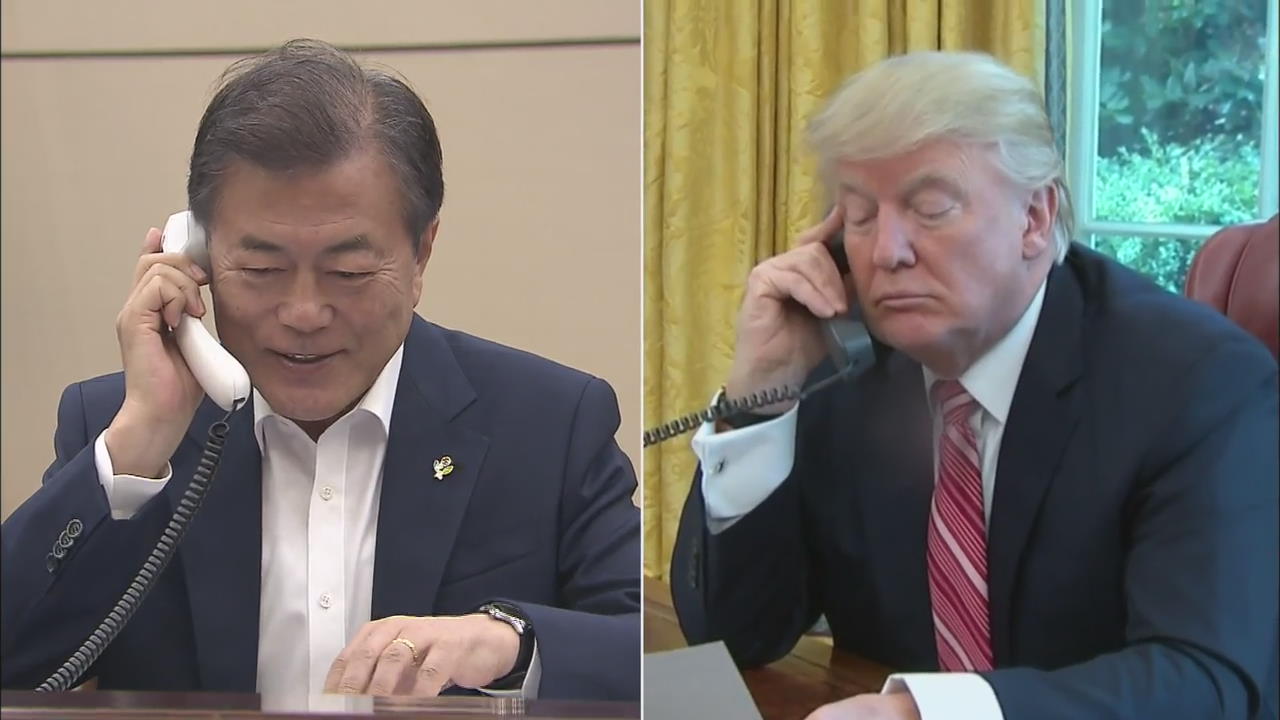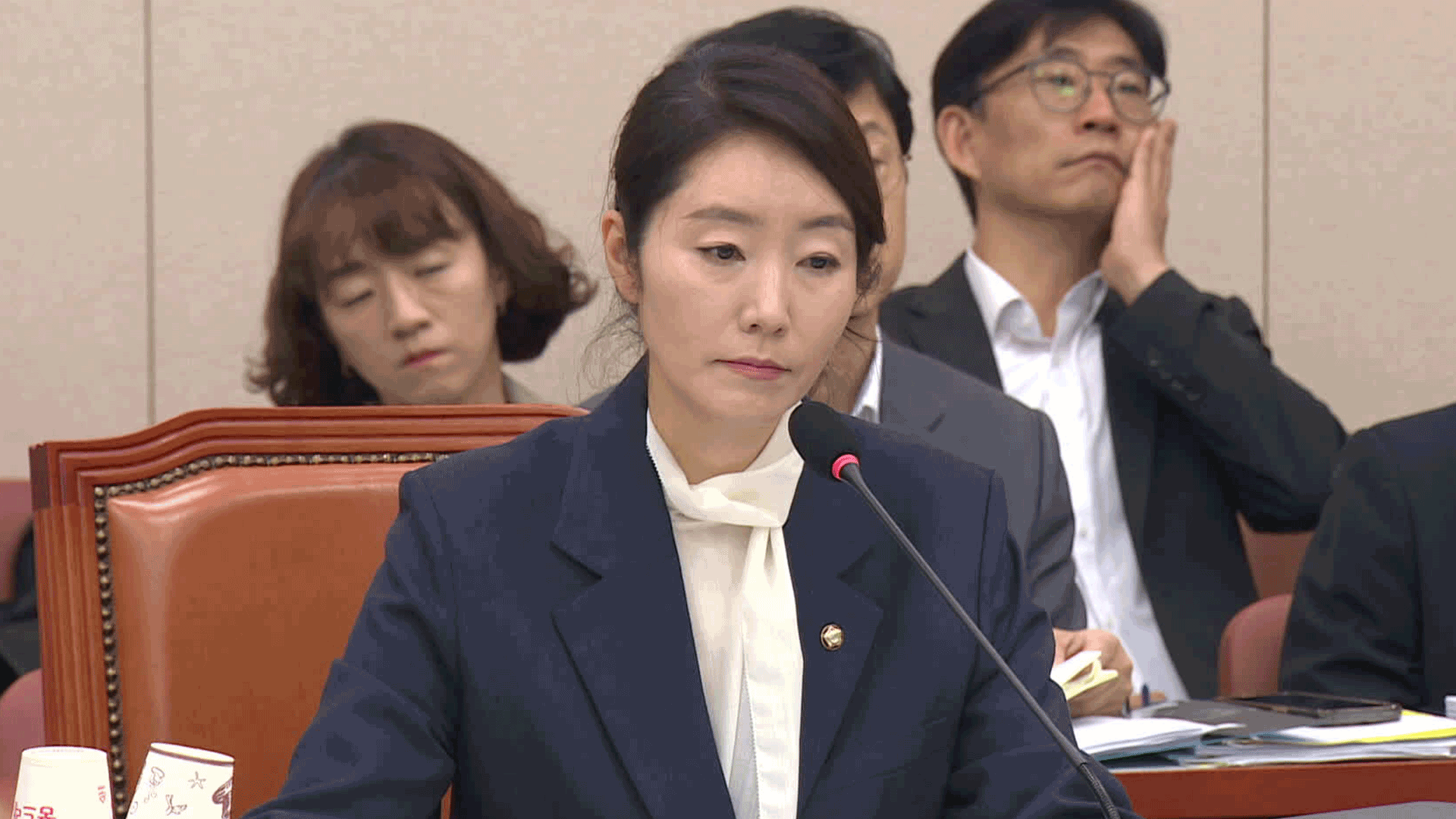Energy Zero Buildings
입력 2019.02.11 (15:18)
수정 2019.02.11 (15:27)
읽어주기 기능은 크롬기반의
브라우저에서만 사용하실 수 있습니다.
[Anchor Lead]
You might have heard about the so-called "energy zero" houses, which produce clean energy on their own and use it efficiently. Starting next year, the Korean government will mandate ‘Energy Zero’ buildings in the public sector, and expand them to the private sector in 2025.
[Pkg]
These buildings catch the eye with their roofs covered with gigantic solar panels. It's an ‘Energy Zero’ residential complex built in 2017. Last month, the residents paid nothing for heating while maintaining indoor temperatures of 25 degrees Celsius. Their houses can block the cold wind while allowing air circulation. The houses are also equipped with a system that conveniently shows, how much of the produced energy is consumed.
[Soundbite] Yoo Mi-hee(Resident of ‘Energy Zero’ house) : "This house has a ‘thermos-like’ design. I am very proud of my entrance door. I like living here more than in the mountains."
However, there is also a downside. The residents must not forget to open their window blinds during the day in order to fully utilize solar energy. Some residents are dissatisfied with the temperature of their hot water, which can only reach 43 degrees using geothermal heat. They think it's not high enough to heat the floor or take hot, steaming baths. With the heating and air conditioning costs skyrocketing in the nation due to extreme weather, environmentally friendly energy has become an essential factor in architecture. Participation on the part of private construction companies is imperative to promote the use of green energy. However relatively high construction costs and long construction period provide challenges.
[Soundbite] Kim Joon(Min. of Land, Infrastructure and Transport) : "When expanding ‘Energy Zero’ buildings to the private sector in 2025, we will pro-actively consider financial support to minimize construction costs."
The Ministry of Land, Infrastructure and Transport plans to push for mandatory eco-friendly energy certifications for small buildings that are less than 3,000 square meters in size, and expand the new regulation gradually to larger buildings.
You might have heard about the so-called "energy zero" houses, which produce clean energy on their own and use it efficiently. Starting next year, the Korean government will mandate ‘Energy Zero’ buildings in the public sector, and expand them to the private sector in 2025.
[Pkg]
These buildings catch the eye with their roofs covered with gigantic solar panels. It's an ‘Energy Zero’ residential complex built in 2017. Last month, the residents paid nothing for heating while maintaining indoor temperatures of 25 degrees Celsius. Their houses can block the cold wind while allowing air circulation. The houses are also equipped with a system that conveniently shows, how much of the produced energy is consumed.
[Soundbite] Yoo Mi-hee(Resident of ‘Energy Zero’ house) : "This house has a ‘thermos-like’ design. I am very proud of my entrance door. I like living here more than in the mountains."
However, there is also a downside. The residents must not forget to open their window blinds during the day in order to fully utilize solar energy. Some residents are dissatisfied with the temperature of their hot water, which can only reach 43 degrees using geothermal heat. They think it's not high enough to heat the floor or take hot, steaming baths. With the heating and air conditioning costs skyrocketing in the nation due to extreme weather, environmentally friendly energy has become an essential factor in architecture. Participation on the part of private construction companies is imperative to promote the use of green energy. However relatively high construction costs and long construction period provide challenges.
[Soundbite] Kim Joon(Min. of Land, Infrastructure and Transport) : "When expanding ‘Energy Zero’ buildings to the private sector in 2025, we will pro-actively consider financial support to minimize construction costs."
The Ministry of Land, Infrastructure and Transport plans to push for mandatory eco-friendly energy certifications for small buildings that are less than 3,000 square meters in size, and expand the new regulation gradually to larger buildings.
■ 제보하기
▷ 카카오톡 : 'KBS제보' 검색, 채널 추가
▷ 전화 : 02-781-1234, 4444
▷ 이메일 : kbs1234@kbs.co.kr
▷ 유튜브, 네이버, 카카오에서도 KBS뉴스를 구독해주세요!
- Energy Zero Buildings
-
- 입력 2019-02-11 15:21:29
- 수정2019-02-11 15:27:16

[Anchor Lead]
You might have heard about the so-called "energy zero" houses, which produce clean energy on their own and use it efficiently. Starting next year, the Korean government will mandate ‘Energy Zero’ buildings in the public sector, and expand them to the private sector in 2025.
[Pkg]
These buildings catch the eye with their roofs covered with gigantic solar panels. It's an ‘Energy Zero’ residential complex built in 2017. Last month, the residents paid nothing for heating while maintaining indoor temperatures of 25 degrees Celsius. Their houses can block the cold wind while allowing air circulation. The houses are also equipped with a system that conveniently shows, how much of the produced energy is consumed.
[Soundbite] Yoo Mi-hee(Resident of ‘Energy Zero’ house) : "This house has a ‘thermos-like’ design. I am very proud of my entrance door. I like living here more than in the mountains."
However, there is also a downside. The residents must not forget to open their window blinds during the day in order to fully utilize solar energy. Some residents are dissatisfied with the temperature of their hot water, which can only reach 43 degrees using geothermal heat. They think it's not high enough to heat the floor or take hot, steaming baths. With the heating and air conditioning costs skyrocketing in the nation due to extreme weather, environmentally friendly energy has become an essential factor in architecture. Participation on the part of private construction companies is imperative to promote the use of green energy. However relatively high construction costs and long construction period provide challenges.
[Soundbite] Kim Joon(Min. of Land, Infrastructure and Transport) : "When expanding ‘Energy Zero’ buildings to the private sector in 2025, we will pro-actively consider financial support to minimize construction costs."
The Ministry of Land, Infrastructure and Transport plans to push for mandatory eco-friendly energy certifications for small buildings that are less than 3,000 square meters in size, and expand the new regulation gradually to larger buildings.
You might have heard about the so-called "energy zero" houses, which produce clean energy on their own and use it efficiently. Starting next year, the Korean government will mandate ‘Energy Zero’ buildings in the public sector, and expand them to the private sector in 2025.
[Pkg]
These buildings catch the eye with their roofs covered with gigantic solar panels. It's an ‘Energy Zero’ residential complex built in 2017. Last month, the residents paid nothing for heating while maintaining indoor temperatures of 25 degrees Celsius. Their houses can block the cold wind while allowing air circulation. The houses are also equipped with a system that conveniently shows, how much of the produced energy is consumed.
[Soundbite] Yoo Mi-hee(Resident of ‘Energy Zero’ house) : "This house has a ‘thermos-like’ design. I am very proud of my entrance door. I like living here more than in the mountains."
However, there is also a downside. The residents must not forget to open their window blinds during the day in order to fully utilize solar energy. Some residents are dissatisfied with the temperature of their hot water, which can only reach 43 degrees using geothermal heat. They think it's not high enough to heat the floor or take hot, steaming baths. With the heating and air conditioning costs skyrocketing in the nation due to extreme weather, environmentally friendly energy has become an essential factor in architecture. Participation on the part of private construction companies is imperative to promote the use of green energy. However relatively high construction costs and long construction period provide challenges.
[Soundbite] Kim Joon(Min. of Land, Infrastructure and Transport) : "When expanding ‘Energy Zero’ buildings to the private sector in 2025, we will pro-actively consider financial support to minimize construction costs."
The Ministry of Land, Infrastructure and Transport plans to push for mandatory eco-friendly energy certifications for small buildings that are less than 3,000 square meters in size, and expand the new regulation gradually to larger buildings.
이 기사가 좋으셨다면
-
좋아요
0
-
응원해요
0
-
후속 원해요
0












![[단독] “윤석열·김용현 등 공모해 군사상 이익 해쳐”<br>…외환죄 대신 일반이적죄 적용](/data/layer/904/2025/07/20250714_3VTJV3.jpg)




이 기사에 대한 의견을 남겨주세요.